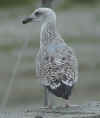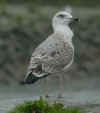 Yellow-legged
Gull- Geelpootmeeuw (L. michahellis): 2cy September
Yellow-legged
Gull- Geelpootmeeuw (L. michahellis): 2cy September
(last update: 20 februari 2004)
YLG
1cy May
YLG
1cy June
YLG
1cy July
YLG 1cy August
YLG 1cy September
YLG 1cy October
YLG 1cy November
YLG 1cy December
YLG
2cy January
YLG 2cy February
YLG 2cy March
YLG 2cy April
YLG 2cy May
YLG 2cy June
YLG 2cy July
YLG 2cy August
YLG 2cy September
YLG 2cy October
YLG 2cy November
YLG 2cy December
YLG
3cy January
YLG 3cy February
YLG 3cy March
YLG 3cy April
YLG 3cy May
YLG 3cy June
YLG 3cy July
YLG 3cy August
YLG 3cy September
YLG 3cy October
YLG 3cy November
YLG 3cy December
YLG
sub-ad Jan.
YLG sub-ad Feb.
YLG sub-ad March
YLG sub-ad April
YLG sub-ad May
YLG sub-ad June
YLG sub-ad July
YLG sub-ad Aug.
YLG sub-ad Sept.
YLG sub-ad Oct.
YLG sub-ad Nov.
YLG sub-ad Dec.
YLG
adult January
YLG adult February
YLG adult March
YLG adult April
YLG adult May
YLG adult June
YLG adult July
YLG adult August
YLG adult September
YLG adult October
YLG adult November
YLG adult December
|
General description: By late September, the primary moult is in its
last stage, with only the outermost primary P10 still not completely fully
grown in some birds. But many birds show fully grown P10 and therefore
have finished the complete moult, which started in April. Moult stage and pace of remiges and rectrices: The table below represents two primary moult scores for September 21 and 22 2002 at Etaples, Calais region, NW France. It's clear that most 2cy michahellis have completed or nearly completed the moult of the primaries, with only P10 falling slightly short. Throughout the summer months, from June to September, the primary moult scores in 2cy michahellis remained very predictable, with very little variation (compared to e.g. 2cy Lesser Black-backed Gulls in the Netherlands), as can be read from the low standard deviation scores. By mid September, slightly less than 50% of the birds have the primary moult completed. By the end of July, the average primary
moult score is P6 fully grown by 28th July. The most
advanced birds by late July show an obvious short wing, with P10 dropped
and P7 already fully grown. One bird has P8 fully grown. The low SD values
(standard deviation) in the July
tables imply a small range of variation. These michahellis figures can be compared to 2cy argenteus. The differences in average PMS between the two species are limited but apparent. 2cy Larus argentatus l.s. from the Netherlands are about 1.2 points behind, compared to 2cy michahellis from NW France. Note however that from September onwards, Scandinavian argentatus join the local population of argenteus, resulting in an obvious increase in the range of individual primary scores, as can be read from the increase in standard deviations from the end of the month onwards. The majority of 2cy michahellis have finished moult in the rectrices by the end of August and have finished moult in the secondaries by the second week of September. By the end of September, moult in the secondaries may be seen again in just less than 20% of 2cy michahellis. Birds grow in plain white tail-feathers or white feathers with limited black vermiculation in the partial moult. Table three shows an overview of rectrices moult scores of 22 birds from mid-September. Since the tail-feathers are moulted centrifugally, the replaced tail-feathers are normally the inner rectrices R1 and R2. Timing and strategy of partial moult In the complete moult during the summer, 2cy michahellis moult all the scapulars, wing-coverts, tertials and rectrices. In the July and August sections the progress of this complete moult is described. By August, the complete moult in the wing-coverts is finished with replacement of the last central greater coverts and finally the feathers in the carpal edge (outer lesser coverts). As those last lesser coverts are replaced for second generation feathers, the partial autumn moult starts in 2cy michahellis, starting again with the upper tertials and outer median coverts. The box below enlarges upon the partial moult in autumn in 2cy michahellis. At the bottom of this page, a table is
included to show the stage of partial moult in late September in 2cy michahellis.
The exact sequence of the partial moult varies from one individual to
another, but most 2cy michahellis replace some of the following
feathers in autumn: upper tertials, wing-coverts, scapulars and in a few cases
(about 20% of the birds) tail-feathers. The September moult stage: the innermost greater coverts
and the innermost median coverts are shed. By mid-September, the upper two
tertails are growing and the gap in the outer median covert row is closed
in descendant order (the replacement of new feathers starts in the
outer-wing). In advanced birds, the replacement of the outer median
coverts takes place by late August (see image
09 in the August section), but it can be found commonly in early
September (see this, this
and this individual). So, by late September, 2cy michahellis
can be found in active moult in almost all wing-covert tracts, while about
20% of the birds also start dropping one or a few tail-feathers (see table
below). It's hard to label the feathers to exact generation. As can be seen in the 1cy michahellis October section, the post-juvenile moult in michahellis can be very extensive. Most michahellis moult inner wing-coverts to second generation in 1cy October. They replace these wing-coverts again in the complete moult in July-August. Then again, inner wing-coverts are replaced by the partial moult in 2cy michahellis in September, but not necessarily the same wing-coverts as in the post-juvenile moult. This also holds for the tail-feathers. And the scapulars may have been moulted to fourth or fifth generation feathers, although the pattern is still not completely adult-like. Due to the considerable moult in the scapulars in 1cy birds in August, in 2cy birds in April-May, in July and again in September, we exclude the scapulars from further analysis. Movements The majority of michahellis in NW France arrive from SW origins, the colonies from Marseille and the Mediterranean coast, Italy, Switzerland and the German Rhine colony. By September, the majority has arrived in NW France and in the Netherlands, largest groups can be found in this month. From mid-October, numbers drop again, as birds migrate south along the Atlantic coast. Tables
|
|||||||||||||||||||||||||||||||||||||||||||||||||||||||||||||||||||||||||||||||||||||||||||||||||||||||||||||||||||||||||||||||||||||||||||||||||||||||||||||||||||||||||||||||||||||||||||||||||||||||||||||||||||||||||||||||||||||||||||||||||||||||||||||||||||||||||||||||||||||||||||||||||||||||||||||||||||||||||||||||||||||||||||||
 Photo
6146: YLG (L. michahellis) 2cy, September 17 2001, Bergen op
Zoom, the Netherlands. Photo
6146: YLG (L. michahellis) 2cy, September 17 2001, Bergen op
Zoom, the Netherlands. |
|||||||||||||||||||||||||||||||||||||||||||||||||||||||||||||||||||||||||||||||||||||||||||||||||||||||||||||||||||||||||||||||||||||||||||||||||||||||||||||||||||||||||||||||||||||||||||||||||||||||||||||||||||||||||||||||||||||||||||||||||||||||||||||||||||||||||||||||||||||||||||||||||||||||||||||||||||||||||||||||||||||||||||||
 Photo
4733: YLG (L. michahellis) 2cy, September 21 2002, Etaples,
France. Photo
4733: YLG (L. michahellis) 2cy, September 21 2002, Etaples,
France. |
|||||||||||||||||||||||||||||||||||||||||||||||||||||||||||||||||||||||||||||||||||||||||||||||||||||||||||||||||||||||||||||||||||||||||||||||||||||||||||||||||||||||||||||||||||||||||||||||||||||||||||||||||||||||||||||||||||||||||||||||||||||||||||||||||||||||||||||||||||||||||||||||||||||||||||||||||||||||||||||||||||||||||||||
 Photo
4781: YLG (L. michahellis) 2cy, September 21 2002, Dannes -
Le Portel, France. Photo
4781: YLG (L. michahellis) 2cy, September 21 2002, Dannes -
Le Portel, France. |
|||||||||||||||||||||||||||||||||||||||||||||||||||||||||||||||||||||||||||||||||||||||||||||||||||||||||||||||||||||||||||||||||||||||||||||||||||||||||||||||||||||||||||||||||||||||||||||||||||||||||||||||||||||||||||||||||||||||||||||||||||||||||||||||||||||||||||||||||||||||||||||||||||||||||||||||||||||||||||||||||||||||||||||
 Photo
4826: YLG (L. michahellis) 2cy, September 22 2002, Etaples,
France. Photo
4826: YLG (L. michahellis) 2cy, September 22 2002, Etaples,
France. |
|||||||||||||||||||||||||||||||||||||||||||||||||||||||||||||||||||||||||||||||||||||||||||||||||||||||||||||||||||||||||||||||||||||||||||||||||||||||||||||||||||||||||||||||||||||||||||||||||||||||||||||||||||||||||||||||||||||||||||||||||||||||||||||||||||||||||||||||||||||||||||||||||||||||||||||||||||||||||||||||||||||||||||||
 Photo
4823: YLG (L. michahellis) 2cy, September 22 2002, Etaples,
France. Photo
4823: YLG (L. michahellis) 2cy, September 22 2002, Etaples,
France. |
|||||||||||||||||||||||||||||||||||||||||||||||||||||||||||||||||||||||||||||||||||||||||||||||||||||||||||||||||||||||||||||||||||||||||||||||||||||||||||||||||||||||||||||||||||||||||||||||||||||||||||||||||||||||||||||||||||||||||||||||||||||||||||||||||||||||||||||||||||||||||||||||||||||||||||||||||||||||||||||||||||||||||||||
 Photo
6327: YLG (L. michahellis) 2cy, September 24 2001, IJmuiden,
the Netherlands. Photo
6327: YLG (L. michahellis) 2cy, September 24 2001, IJmuiden,
the Netherlands. |
|||||||||||||||||||||||||||||||||||||||||||||||||||||||||||||||||||||||||||||||||||||||||||||||||||||||||||||||||||||||||||||||||||||||||||||||||||||||||||||||||||||||||||||||||||||||||||||||||||||||||||||||||||||||||||||||||||||||||||||||||||||||||||||||||||||||||||||||||||||||||||||||||||||||||||||||||||||||||||||||||||||||||||||
 Photo
6498: YLG (L. michahellis) 2cy, September 30 2001, Dannes -
Le Portel, France. Photo
6498: YLG (L. michahellis) 2cy, September 30 2001, Dannes -
Le Portel, France. |
|||||||||||||||||||||||||||||||||||||||||||||||||||||||||||||||||||||||||||||||||||||||||||||||||||||||||||||||||||||||||||||||||||||||||||||||||||||||||||||||||||||||||||||||||||||||||||||||||||||||||||||||||||||||||||||||||||||||||||||||||||||||||||||||||||||||||||||||||||||||||||||||||||||||||||||||||||||||||||||||||||||||||||||
 Photo
6586: YLG (L. michahellis) 2cy, September 30 2001,
Boulogne-sur-Mer, France. Photo
6586: YLG (L. michahellis) 2cy, September 30 2001,
Boulogne-sur-Mer, France. |
|||||||||||||||||||||||||||||||||||||||||||||||||||||||||||||||||||||||||||||||||||||||||||||||||||||||||||||||||||||||||||||||||||||||||||||||||||||||||||||||||||||||||||||||||||||||||||||||||||||||||||||||||||||||||||||||||||||||||||||||||||||||||||||||||||||||||||||||||||||||||||||||||||||||||||||||||||||||||||||||||||||||||||||

